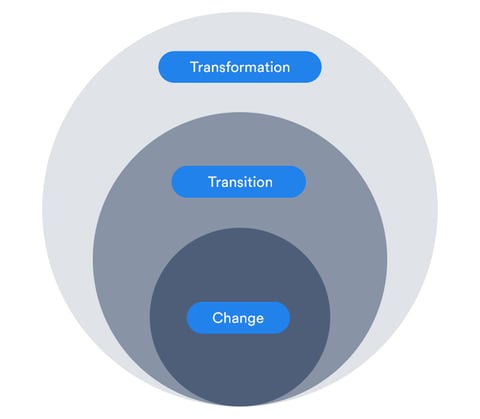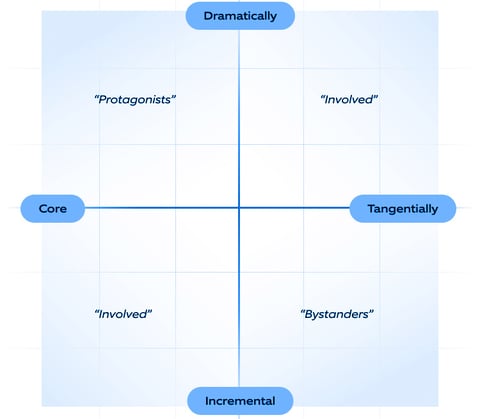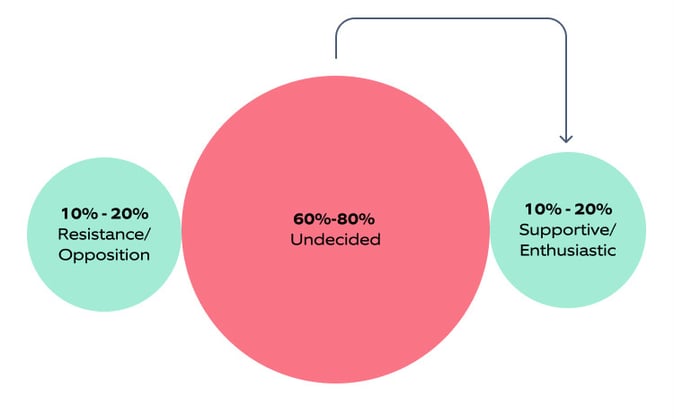Practical thoughts on Organizational Change Management
A strategic guide to successful Organizational Change Management.
CHANGE & TRANSFORMATION
2/14/20255 min read



No matter if you are a program/project manager, no matter where you are in the reporting line or you are at top management level, you would have most likely heard of the term “Change Management.” What’s more, you might even have first-hand experience of change management in your career. Even with that being the case, what can you expect to gain from this article? Come, find out!
To get everyone’s basic understanding on the same page, I will begin with a quick background to the first three parts of a typical Organizational Change Management (OCM) process. That done, I will also share some of my key OCM-related learnings and recommendations, based on my real-life examples. I believe these insights will be helpful enough for you to benefit from and apply to your OCM process as well.
Abstract
What are the most common agents for change? The most typical drivers for change are technological ® evolutions, adapting to the market and demands of customers, new regulatory requirements or speaking from a business perspective: growing the company, expanding the market share, and securing the top line and bottom line.
This translates into initiatives like rolling out a new IT system, building new machinery, redesigning the organizational structure, or doing a cloud or AI transformation. All these initiatives are carried out via project management methods, be it Agile or Traditional. These methods focus on achieving the goal within the realms of a defined time and budget.
OCM, on the other hand, is centered around the people affected by such projects. It specifically aims at ensuring that improved or newly implemented processes, tools, methods are accepted or better embraced by the concerned people so that they can work effectively and efficiently.
But if OCM is neglected, you will run the risk of not achieving your project goals because people would be resisting or even opposing the new way or the change. You might even lose some key people on the way if you do not get their buy-in. Thus, any kind of project that affects how people are working must always be fundamentally tied to OCM.
Step 1: Eleveight OCM Onion – Types of change
Now, think about a project, and the following picture of the Eleveight OCM Onion will help you categorize it:
The OCM Onion consists of three layers that represent the different categories of OCM:
“Change” is the mastery of improving and/or correcting existing parts of an organization, in most cases often focusing on improving a method or process.
“Transition” is the process of moving towards a known target, which differs from the current situation.
"Transformation“ is the stage at which an organization is reshaped significantly in terms of its strategy, vision, culture, and structure.
As with a real onion, an initiative will not always strictly fall into just one of the three categories – you might see them peeling off onto the other layers. Even more so, initiatives might evolve over time, growing from one category to the next one.
Knowing what you are dealing with is an especially important starting point on your Change Management journey. The more you are towards the outer layers of the OCM Onion, the more important OCM activities should become for you.
The Matrix Reloaded: Assess impact of change in OE terms


Plot each of the concerned organizational entities (OEs), like the different teams and departments, on the matrix shown in Figure 2, as per the following criteria:
Will the planned project impact them in their core processes or only tangentially?
Will the planned project change their way of working dramatically or only incrementally
The more you find yourself adding different entities as “protagonists” in the top left corner, the more likely you are to reach the outside layer of our Eleveight OCM Onion. The number of concerned people in each OE is not necessarily a factor for this category because you can treat them as the same, even if they are many.
Conducting such an exercise will help you understand the magnitude of your project and identify your key target groups for the later parts of the OCM process.
Step 2 – The “Why?”
The most crucial step in OCM is about understanding the “why?” According to Harvard Professor John Kotter, 50% of all OCM initiatives fall short because this step is not carried out properly. You need to create a sense of urgency in most of the affected people to have a good chance of success.


As a rule of thumb, there will always be around 10-20% of people who will be readily enthusiastic and supportive about the change, On the other hand, another 10-20% of people will resist or oppose the change, with the majority percentage 60-80% of people being fence-sitters, remaining unsure and undecided about which side to pick.
This big, indecisive group in the middle should be the focus of your OCM activities. It is much easier to move them and reach a critical mass of overall support rather than investing a lot of time into moving a few of the ever-ready-to-resist ones.
Take your time and think thoroughly about all the reasons why a change is really needed. This will help you come up with the best inputs to explain your rationale easily and convincingly to all the concerned people. If needed, get some external help to challenge you.
Conclusion
The closer you come to the outer layers of the OCM Onion, the more support and sponsorship is required from top management. While a simple “Change” might require the attention of a team lead or line manager, a “Transition” absolutely must be endorsed by the C-level or at least C-1 level throughout the whole organization.
If you fail here, the odds are remarkably high that you might end up in a situation where various competing initiatives would have started, but the lack of a clear goal or vision would have left everyone confused.
This would render these initiatives rather useless from the get-go. It gets even worse if the corporate structure is built on very specialized “silos.” Yes silos, the corporate jargon for a place where you have very deep singular expertise but no actual overview of the overall product portfolio or service offerings of the company.
In such an environment, silos tend to segregate themselves even further from each other instead of working better. To break these chains, a broad overarching change alliance within the (top) management is imperative, to ensure that key messages are delivered consistently.
Step 3 - Form an alliance
Now that you have identified your reasons for change and gathered your alliance members that support your initiative, you likely have a clearer understanding of the scale of the transformation ahead.
You're well-positioned to move forward by developing and sharing the vision and goals that will guide the process.
Stay tuned for the next blog post, where I'll dive deeper into these topics.
Location
FR - 7 Rue d'Armaillé, 75017 Paris, France
MA - 290 Bd Zoulikha Nassiri, Casablanca, Maroc
Hours
Mon. - Fri. 9:00-18:00
Sat. - Sun. Closed
Contacts
+33 1 89 71 39 31
+212 661 45 50 19
+212 601 90 14 52
info@eleveight-group.com
About
We work by your side to bring the right tech talents solutions into your business. We have all the capabilities to build bespoke talent solutions that solve your unique and evolving needs.
© 2025 Eleveight
